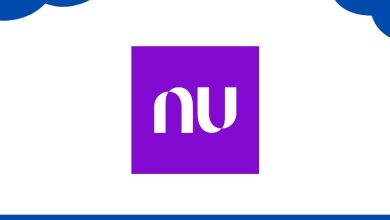TSM Stock Analysis: Price Surges Over 3% as It Nears 52-Week High

Taiwan Semiconductor Manufacturing Company Limited (NYSE: TSM) is demonstrating significant bullish momentum in today’s trading session. As of 9:54 AM EDT, shortly after the market opened, the semiconductor giant’s stock was trading at 7.15 (+3.01%). This surge places the stock near its 52-week high, signaling strong investor confidence.
This article provides a comprehensive breakdown of the key data points from the latest market snapshot, offering traders a detailed look at the metrics driving TSM’s performance.
Disclaimer: This article is for informational and educational purposes only. It is not financial advice. The stock market is volatile, and all investment decisions should be made with caution and preferably after consulting with a qualified financial advisor. The data presented here is a snapshot in time and is subject to change.
Intraday Performance and Price Action
The 1-day chart reveals a dynamic start to the trading day for TSM:
-
Pre-Market Action: The stock showed some fluctuation in the pre-market hours, generally hovering around the $245 level.
-
Market Open Gap-Up: TSM opened at 237.56. This “gap-up” often indicates positive overnight news or strong investor sentiment carrying over into the new session.
-
Opening Volatility: Immediately following the open, the stock experienced a sharp, brief dip to its day’s low of $241.40. However, buyers quickly stepped in, driving the price back up aggressively. This pattern suggests that while some profit-taking may have occurred at the open, the underlying demand for the stock is robust.
As of the snapshot, the price has stabilized around $244.73, holding onto most of its early gains.
Key Trading Metrics at a Glance
For any trader, understanding the core trading data is essential. Here’s a breakdown of TSM’s key figures:
-
Day’s Range: $241.40 – $247.87
-
This range indicates the stock’s volatility for the day. The current price is trading in the upper half of this range, a bullish sign.
-
-
52-Week Range: $133.57 – $247.87
-
Crucially, the day’s high is also the 52-week high. Trading at or near a yearly peak is a powerful momentum indicator that often attracts further buying interest.
-
-
Volume: 8,480,943
-
This is the number of shares traded so far in the session.
-
-
Average Volume: 12,185,423
-
The current volume is still below the daily average. However, given it’s early in the trading day, volume is on pace to meet or exceed the average, which would confirm the strength of the price move.
-
-
Bid / Ask: $241.70 x 200 / $241.99 x 100
-
This shows the current market for TSM shares. There is an order to buy 200 shares at $241.70 and an order to sell 100 shares at $241.99. The relatively tight spread between the bid and ask suggests good liquidity.
-
Fundamental & Valuation Analysis
Beyond the immediate price action, these fundamental metrics provide a deeper look into TSM’s valuation and market standing:
-
Market Cap (Intraday): 1.268T
-
With a market capitalization exceeding $1.2 trillion, TSM is a “mega-cap” stock and a dominant leader in its industry. Its size implies stability and a significant weighting in major market indices.
-
-
P/E Ratio (TTM): 28.77
-
The Price-to-Earnings ratio (trailing twelve months) of 28.77 is a key valuation metric. Traders and investors use this to gauge if a stock is overvalued or undervalued relative to its earnings, its industry peers (like Intel or Samsung), and its own historical average.
-
-
EPS (TTM): 8.50
-
The Earnings Per Share of $8.50 confirms TSM’s strong profitability over the past year, which is the foundation supporting its stock price.
-
-
Beta (5Y Monthly): 1.34
-
A Beta greater than 1.0 indicates that TSM is historically more volatile than the overall market (as represented by the S&P 500). A Beta of 1.34 suggests that for every 1% move in the market, TSM stock tends to move 1.34% in the same direction. This is a critical risk factor for traders to consider, as it implies the potential for larger gains but also larger losses.
-
Future Outlook: Dividends, Earnings, and Analyst Estimates
Looking ahead, these dates and figures are crucial for traders to have on their calendars:
-
Forward Dividend & Yield: 3.29 (1.45%)
-
TSM pays a dividend, which can attract long-term investors and provide a small cushion during downturns. The forward yield is 1.45%.
-
-
Ex-Dividend Date: Sep 16, 2025
-
This is the date by which an investor must own the stock to be eligible to receive the next dividend payment. Prices can sometimes dip slightly after this date.
-
-
Earnings Date: Jul 17, 2025
-
This is the next scheduled earnings report. These events are typically preceded by increased volatility as the market anticipates the results.
-
-
1y Target Est: 229.89
-
It is noteworthy that the 1-year analyst target estimate is currently below the live trading price. This could suggest a few things: analysts may not have updated their targets to reflect the recent powerful rally, or they may believe the stock is currently trading above its fundamental valuation. This disconnect is a key point for traders to analyze.
-
Summary and Key Takeaways for Traders
-
Strong Bullish Momentum: TSM is showing significant upward momentum, gapping up at the open and trading near its 52-week high.
-
Key Support & Resistance: The day’s low of 247.87 is the immediate resistance to watch.
-
Higher Volatility: The Beta of 1.34 confirms the stock is more volatile than the market, a factor that day traders and swing traders must manage carefully.
-
Valuation vs. Price: The current price has surpassed the average 1-year analyst target, creating a point of contention. Traders should watch to see if analysts revise their targets upwards or if the price corrects back towards that level.
-
Upcoming Catalysts: The next major scheduled event is the earnings report on July 17, 2025, which will be a significant driver of future price action.
In conclusion, Taiwan Semiconductor (TSM) is currently a high-momentum stock capturing significant market attention. While the bullish signals are strong, traders should remain disciplined, manage risk according to the stock’s higher beta, and stay informed about the key levels and upcoming catalysts.






